Qanats - re-directing underground water in Iran
Qanats - re-directing underground water in Iran
source visit by Earth Science Australiahttp://www.waterhistory.org/histories/qanats/
What
are qanats and how are they useful ?
Qanat design and construction
Significant advantages
of Qanats
Urban
Water Supplies - Qanat + Cistern
Passive
Cooling - Wind Towers + Qanats
Qanats in the future
see
also Wind Towers for passive cooling in Iran ...
see
also Vertical Shaft Windmills in Iran...
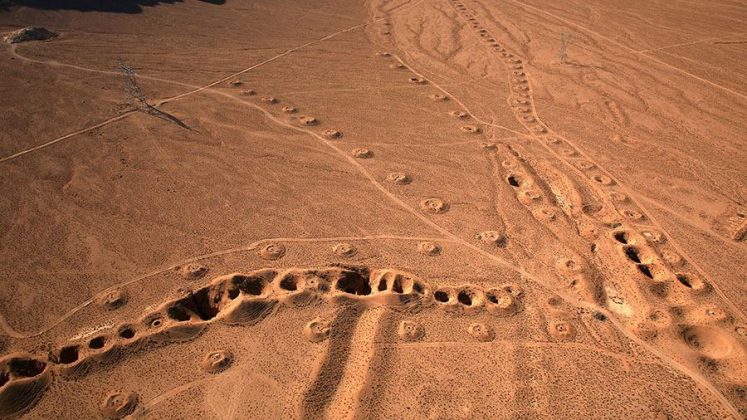
What are Qanats and how are they useful ?
Qanats are tunnels, hand-dug through unconsolidated material, which collect underground water from nearby mountain drainages and redirect them to arable land. Entering and working on qanats is a very dangerous occupation.
Qanat tunnels were hand-dug, just large enough to fit the person doing the digging. Along the length of a qanat, which can be several kilometers, vertical shafts were sunk at intervals of 20 to 30 meters to remove excavated material and to provide ventilation and access for repairs.
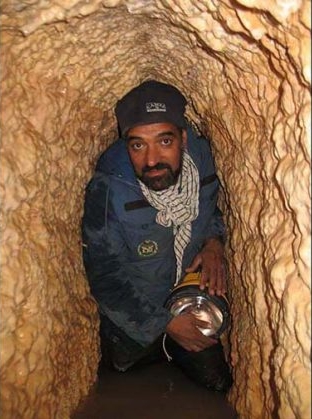
Qanat Design and Construction
The main qanat tunnel sloped gently down from pre-mountainous alluvial fans to an outlet at a village. From there, canals would distribute water to fields for irrigation. These amazing structures allowed Persian farmers to succeed despite long dry periods when there was no surface water to be had.Written records leave little doubt that ancient Iran (Persia) was the birthplace of the qanat. As early as the 7th century BC, the Assyrian king Sargon II reported that during a campaign in Persia he had found an underground system for tapping water. His son, King Sennacherib, applied the "secret" of using underground conduits in building an irrigation system around Nineveh.
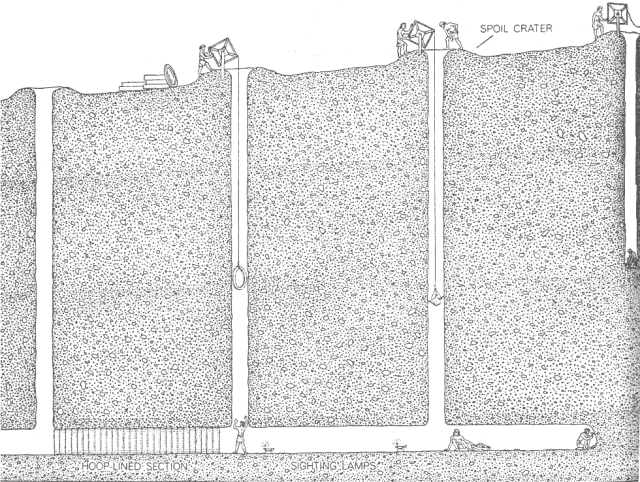
A vertical shaft 1 meter in diameter is thus dug out. A gently sloping tunnel is then constructed which transports water from groundwater wells to the surface some distance away. If the soil is firm, no lining is required for the tunnel. In loose soil, reinforcing rings are installed at intervals in the tunnel to prevent cave-ins. These rings are usually made of burnt clay
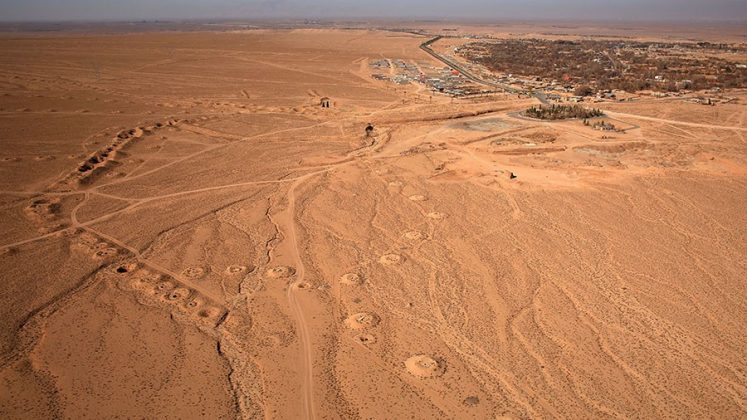
Significant advantages of qanats
There are significant advantages to a qanat water delivery system including:- putting the majority of the channel underground reduces water loss from seepage and evaporation;
- since the system is fed entirely by gravity, the need for pumps is eliminated; and
- it exploits groundwater as a renewable resource. The third benefit
warrants additional discussion.
The rate of flow of water in a qanat is controlled by the level of the underground water table. Thus a qanat cannot cause significant drawdown in an aquifer because its flow varies directly with the subsurface water supply. When properly maintained, a qanat is a sustainable system that provides water indefinitely. The self-limiting feature of a qanat, however, is also its biggest drawback when compared to the range of technologies available today.
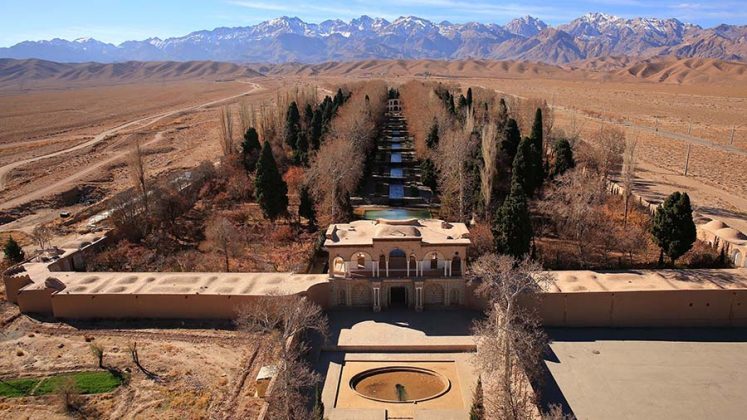
Water flows continuously in a qanat and although some winter water is used for domestic use, much larger amounts of irrigation water are needed during the daylight hours of the spring and summer growing seasons.
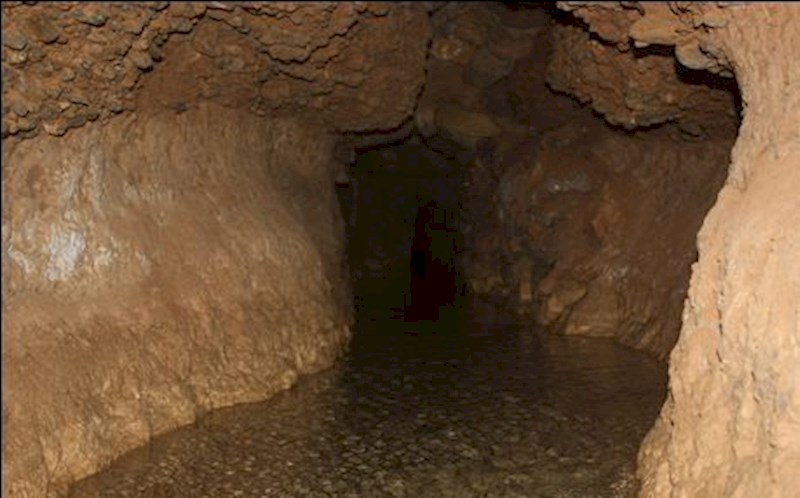
Although this continuous flow is frequently viewed as wasteful, it can, in fact, be controlled. During periods of low water use in fall and winter, water-tight gates can seal off the qanat opening damming up and conserving groundwater for periods of high demand. In spring and summer, night flow may be stored in small reservoirs at the mouth of the qanat
Qanats are constructed by specialists. A windlass is set up at the surface and the excavated soil is hauled up in buckets.
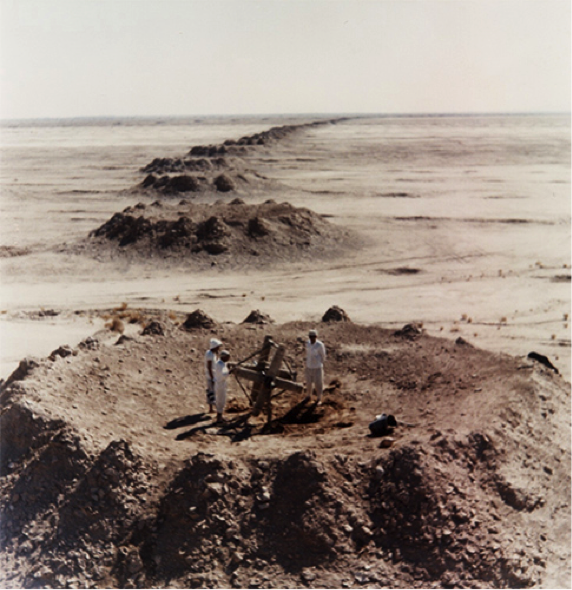
The spoil is dumped around the opening of the shaft to form a small mound; the latter feature keeps surface runoff from entering the shaft bringing silt and other contamination with it. Mineral, salt, and other deposits which accumulate in the channel bed necessitate periodic cleaning and maintenance work.
Urban Water Supplies - Qanat + Cistern
In some cities, water in flows in tunnels beneath residential areas and surfaces near the cultivated area. Staircases from the surface reach down to these streams. The first access is usually at a public cistern where drinking water is available to the entire community.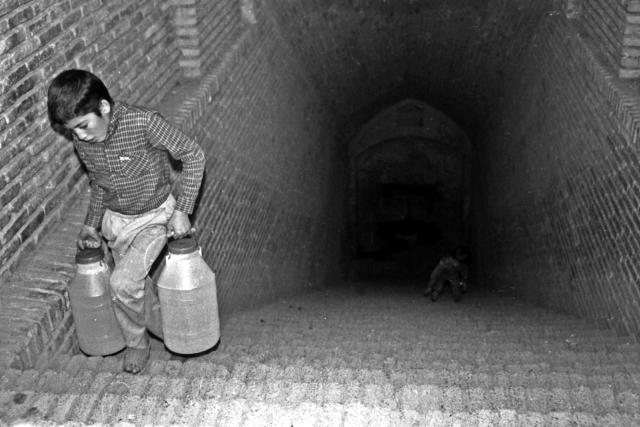
Sometimes these cisterns are sizable vaults as much as 10 meters across and 15 or more meters deep with spiral stairs leading down to small platforms at water level. In cities like Herat in Afghanistan, these cisterns are ancient constructions encased in tile. Other more modest urban access points are found along major streets, and even in some alleys, a factor that probably played an important role in the social and physical layout of the town.
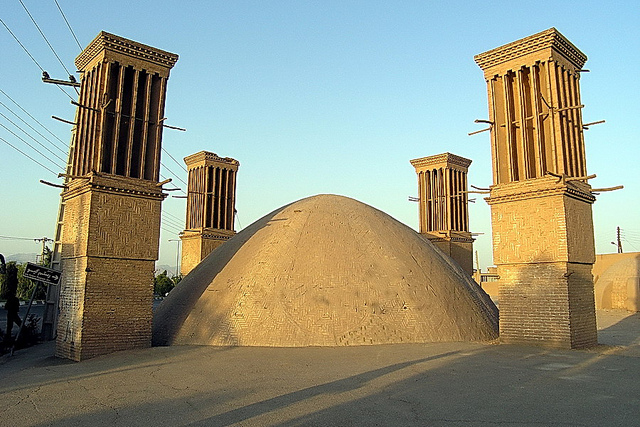
Where tunnels run beneath houses, private access points provide water for various domestic uses. In wealthy homes, special rooms are constructed beside the underground stream with tall shafts reaching upward to windtowers above roof level. Air caught by the windtowers, which are oriented to prevailing summer winds, is forced down the shaft, circulates at water level, and provides a cool refuge from the afternoon heat of summer.
Passive Cooling - Wind Towers + Qanats
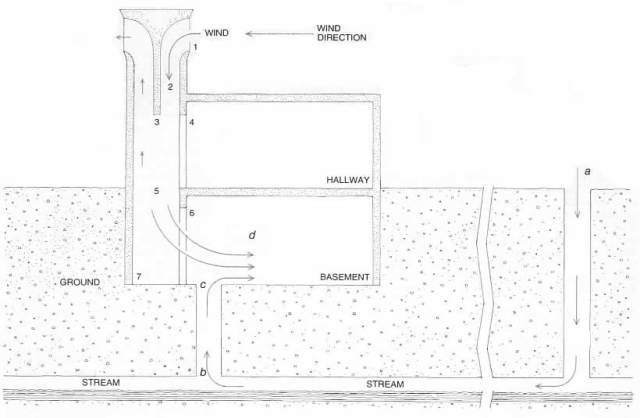
Qanats can be used for cooling as well as water supply. One technology operates in conjunction with a wind tower. The arid regions of Iran have fairly fixed seasonal and daily wind patterns. The wind tower harnesses the prevailing summer winds to cool and circulate it through a building. A typical wind tower resembles a chimney, with one end in the basement of the building and the other end rising from the roof. Wind tower technologies date back over 1000 years.
The passive cooling of a wind tower can be enhanced by connecting it to an underground stream or qanat.
In the system a shaft connects the qanat to the basement of the building to be cooled.
Hot dry air enters the qanat through one of its vertical shafts (a) and is cooled as it flows along the water. Since the underground water is usually cold, the rate of cooling is quite high. The wind tower is placed so that wind flowing through the basement door of the tower passes over the top of the qanat tunnel. When the air flows from a large passage (the tunnel) through a smaller one (the door), its pressure decreases. The pressure of the air from the tower is still diminished when it passes over the top of the tunnel, so that cold moist air from the shaft is entrained by the flow of cooled air from the tower . The mixture of air from the qanat and air from the tower circulates through the basement. A single qanat can serve several wind-tower systems.
Qanats in the future
Traditional qanats require considerable labour in dangerous conditions but the basic design is superb and sustainable and could revitalise many desert locations.
Desert agricultural products can demand higher prices because they can be grown pesticide, mould, fungus, nematode free (once clear of pests the intervening desert acts as a sanitising barrier to the ingress of pests).
Horizontal drilling technology and modern grouts currently used in the coal-seam gas industry could be adapted to drill and line a modern equivalent of qanats.

